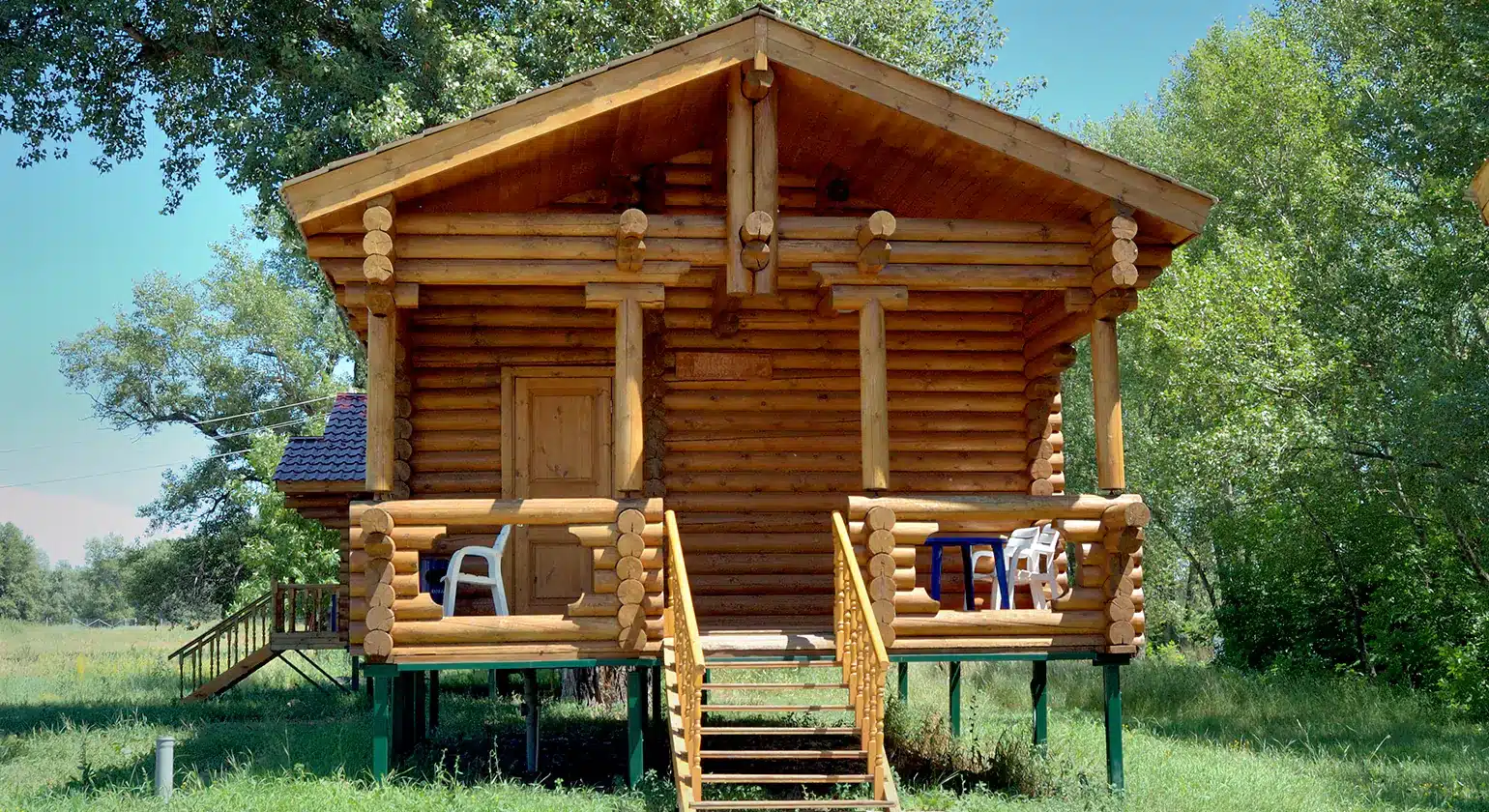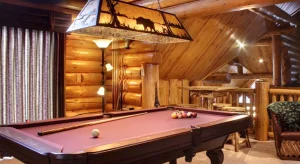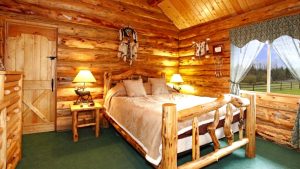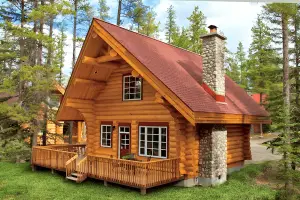As the world moves toward sustainable living, more homeowners are turning to log cabins — not just for their beauty and charm, but also for their eco-friendly potential. A well-designed log cabin can minimize environmental impact, reduce energy consumption, and promote a healthy, natural lifestyle. Whether you’re planning to build a cabin in the woods or design a modern eco-retreat, this guide will walk you through the top log cabin designs that are both stylish and environmentally responsible.
In this article, we’ll explore how sustainable materials, smart design strategies, and energy-efficient technologies are shaping the future of log cabin living — helping eco-conscious homeowners create homes that are as kind to the earth as they are comfortable to live in.
1. The Passive Solar Log Cabin: Harnessing the Sun’s Energy
One of the most effective ways to make your log cabin eco-friendly is by utilizing passive solar design. This design concept focuses on maximizing natural sunlight and heat during colder months while keeping your cabin cool in the summer.
Key features:
- South-facing windows: These capture sunlight throughout the day, reducing the need for artificial heating.
- Thermal mass materials: Logs, stone floors, and brick walls absorb and slowly release heat, helping to maintain a consistent indoor temperature.
- Overhangs and shading: Roof designs with the right overhangs protect interiors from overheating in warmer seasons.
Passive solar cabins are energy-efficient, cost-effective, and sustainable — a perfect blend of traditional design and modern green innovation.
2. The Off-Grid Log Cabin: Independence Meets Sustainability
For homeowners who dream of complete self-sufficiency, off-grid log cabins are the ultimate eco-conscious choice. These cabins operate independently of public utilities, relying on renewable resources for power, water, and heat.
Eco-friendly features include:
- Solar panels or wind turbines: These renewable energy sources provide electricity without relying on fossil fuels.
- Rainwater harvesting systems: Collecting and filtering rainwater ensures a sustainable water supply.
- Composting toilets and greywater systems: These reduce waste and promote water conservation.
Off-grid log cabins embody true eco-living, allowing homeowners to enjoy the serenity of nature while leaving a minimal environmental footprint.
3. The Tiny Log Cabin: Small Space, Big Impact
In today’s world, where minimalism and sustainability go hand in hand, tiny log cabins are gaining immense popularity. These compact yet functional designs emphasize efficiency, simplicity, and reduced resource consumption.
Why tiny log cabins are eco-friendly:
- Less material use: Smaller homes require fewer building materials and create less waste.
- Lower energy demand: Heating, cooling, and lighting a small space consumes far less energy.
- Encourages mindful living: Tiny living promotes intentional design choices and reduced consumption.
Despite their size, tiny log cabins can be remarkably comfortable and stylish, offering cozy interiors, clever storage solutions, and strong connections to the natural environment.
4. The Green Roof Log Cabin: Nature on Top
Imagine looking up from your garden and seeing a lush layer of greenery covering your cabin’s roof. Green roof log cabins are both stunning and sustainable, integrating nature into your home’s design while providing a range of environmental benefits.
Benefits of green roofs:
- Improved insulation: The vegetation layer helps regulate indoor temperatures, reducing heating and cooling costs.
- Stormwater management: Green roofs absorb rainwater, reducing runoff and erosion.
- Air quality improvement: Plants filter pollutants and produce fresh oxygen.
Green roofs also attract local wildlife — bees, birds, and butterflies — helping your home become part of the local ecosystem. They’re ideal for eco-conscious homeowners seeking both function and beauty.
5. The Reclaimed Wood Log Cabin: Sustainability with Character
Using reclaimed or recycled materials is one of the most environmentally friendly ways to build a log cabin. Reclaimed wood comes from old barns, factories, or fallen trees, giving your cabin a rustic charm while conserving valuable resources.
Advantages of using reclaimed wood:
- Reduces deforestation: Reusing old wood helps preserve forests.
- Adds character and history: Every piece of wood tells a story, giving your home a unique, authentic aesthetic.
- Environmentally low-impact: Less energy is needed to process reclaimed wood compared to harvesting and treating new lumber.
Pair reclaimed wood with modern insulation and energy-efficient fixtures, and you’ll have a log cabin that’s not only eco-friendly but also rich in texture and warmth.
6. The Modern Eco-Log Cabin: Where Style Meets Sustainability
Modern eco-log cabins blend rustic craftsmanship with cutting-edge sustainability technology. These designs maintain the traditional charm of logs while incorporating advanced materials and systems for energy efficiency.
Key eco-friendly elements include:
- Triple-glazed windows: These retain heat and reduce noise pollution.
- Geothermal heating systems: Use the earth’s natural temperature to heat and cool the cabin.
- Sustainable insulation: Options like sheep’s wool or recycled cellulose keep interiors cozy without harming the planet.
Modern eco-cabins also focus on open layouts, natural lighting, and low-VOC finishes to promote a healthy indoor environment. The result is a log home that’s environmentally conscious and effortlessly elegant.
7. The Hybrid Log Cabin: Combining Tradition and Innovation
A hybrid log cabin combines traditional log construction with modern building materials and techniques. This design approach offers flexibility — using logs where they make the most impact while integrating energy-efficient elements elsewhere.
Eco-benefits of hybrid log cabins:
- Reduced material waste: Designers can use logs strategically, minimizing environmental impact.
- Improved insulation: Hybrid cabins often include advanced insulation and air-sealing methods.
- Lower maintenance needs: Combining modern materials with logs extends the structure’s lifespan.
This design style is ideal for homeowners who love the rustic appeal of logs but want a more energy-efficient and low-maintenance living solution.
Frequently Asked Questions (FAQs)
1. Are log cabins really eco-friendly?
Yes. When designed thoughtfully, log cabins are highly sustainable. They use renewable materials like wood, retain heat efficiently, and can integrate renewable energy sources such as solar power.
2. What’s the most sustainable type of log cabin design?
Passive solar and off-grid cabins are among the most eco-friendly designs. They minimize energy use and rely on natural or renewable sources for heating, cooling, and power.
3. Can I use recycled materials to build a log cabin?
Absolutely. Using reclaimed wood, recycled metal, and salvaged stone reduces waste, saves resources, and gives your cabin unique character.
4. How can I make my log cabin more energy-efficient?
Add proper insulation, install energy-efficient windows, seal air leaks, and use renewable energy systems like solar panels or geothermal heat pumps.
5. Do eco-friendly log cabins cost more to build?
Initially, some sustainable materials or systems may cost more, but they often save money long-term through reduced energy bills and maintenance costs.
Conclusion: Building a Greener Future with Log Cabin Design
Eco-conscious homeowners are redefining what it means to live sustainably — and log cabins are at the forefront of this movement. Whether it’s a passive solar home that embraces sunlight, a tiny cabin that celebrates simplicity, or a reclaimed-wood retreat that tells a story, each design proves that sustainability and style can coexist beautifully.
Choosing an eco-friendly log cabin design means investing in a home that’s not only energy-efficient but also deeply connected to nature. It’s a commitment to living responsibly, reducing your footprint, and building a legacy of environmental stewardship for future generations.
By combining traditional craftsmanship with modern green innovation, today’s log cabins stand as symbols of harmony between humanity and the natural world — timeless, responsible, and full of life.




